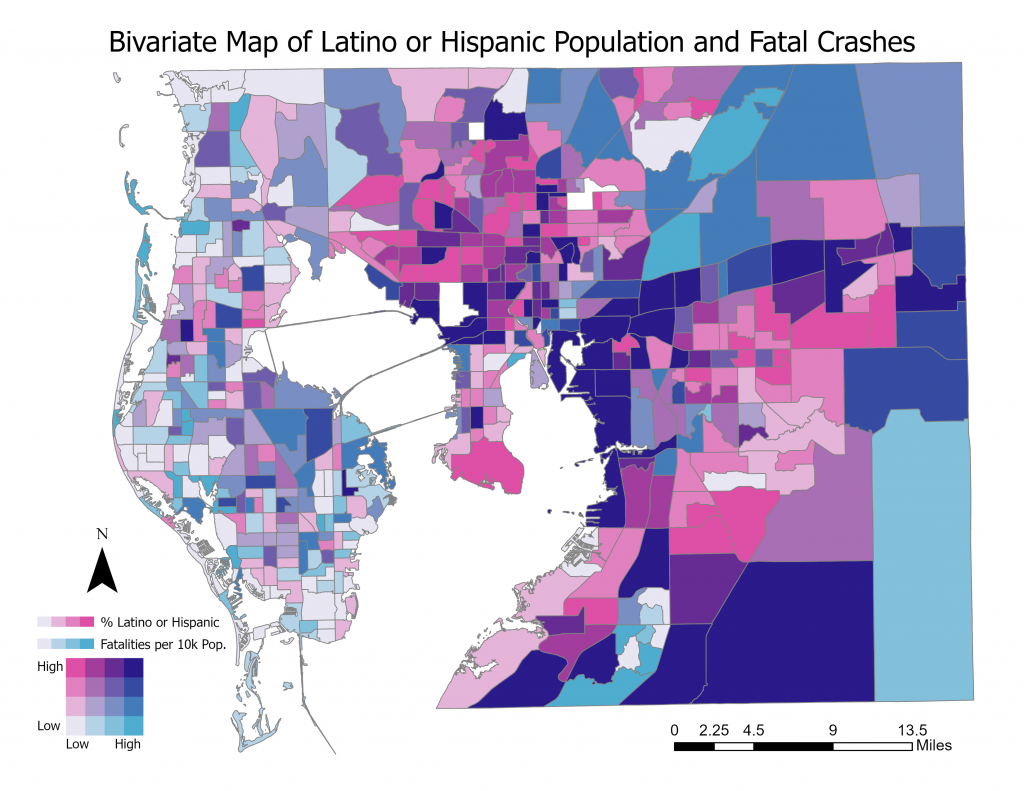Contributed by Olin Green
The Hidden Dimensions of Road Safety: Exploring Socioeconomic and Built Environment Factors in Latin American and Minority Communities
Marginalized groups are overrepresented in fatal car crashes, an inequity likely exacerbated by the intersectionality of location-based and socioeconomic factors that affect vulnerable communities. For instance, low-income neighborhoods with limited access to cars or public transportation often also lack sidewalks and bike lanes. As a result, groups such as Alaskan Native/Native American, African American, and Latino or Hispanic men are more likely to die in car crashes than white men. Driver-related factors and behaviors – including speeding, distracted driving, and aggressive driving – contribute to nearly 90% of all automobile crashes in the U.S. and drastically impact the lives of thousands of people each year. Past research also shows that low-income areas and disadvantaged communities are more likely to be adversely impacted by these harmful events on roadways. While most crashes involve human or driver-related behavioral factors, the interplay between these key factors and the built environment remains underexplored, particularly as a contributor to the disproportionate rates of injuries and fatalities in Latino and other minority communities. This research attempts to bridge this literature gap and advance a comprehensive understanding of traffic safety.
To investigate safety disparities, this study employs an area-based approach that incorporates socioeconomic and transportation-related variables at the census tract level for Hillsborough and Pinellas Counties in Florida, alongside data from the SHRP2 Naturalistic Driving Study (NDS). The NDS data provides detailed information on numerous factors that describe the behavior, condition, and performance of drivers, for the same geographic area. This region was selected due to its varied socioeconomic and transportation-related characteristics, which offer an opportunity to explore the disproportionate impact of unsafe conditions on Latino and African American communities from an intersectional perspective. A geographical clustering approach is used to group census tracts with similar socioeconomic and transportation attributes. These clusters are combined with NDS data and analyzed using regression models to determine whether a driver’s behavior changes in different areas or when traveling in census tracts with different characteristics than their home location. Along with this, regression models can be used to identify the types of areas that are adversely impacted by safety critical events. Both analyses can provide insight into the specific areas where the above communities are overexposed to an unsafe transportation landscape.
This work will investigate the often difficult-to-observe characteristics of safety inequity by uncovering the behavioral factors that contribute to the unequal distribution of unsafe driver behaviors, crashes, and near-crash events in disadvantaged communities. It also identifies the types of areas that experience disproportionately more safety critical events, and the factors linked to them. By deepening our understanding of how driver behavior and place-based characteristics interact, this study aims to inform future research and policy proposals focused on improving transportation safety inequity in marginalized communities. Although this research focuses on inequities in Florida, the findings are likely transferable to other geographic contexts or cities, such as Hartford, Connecticut, where more than 40% of the city’s population is Latino.
